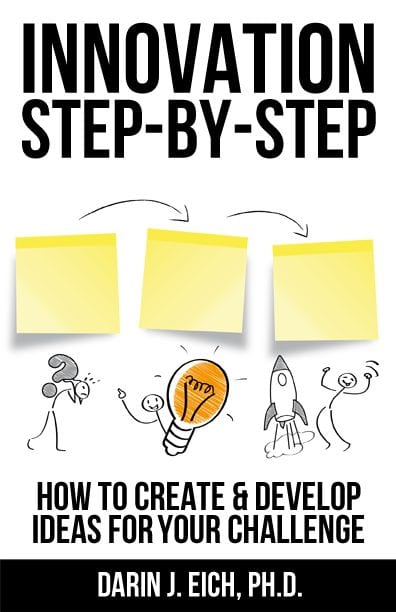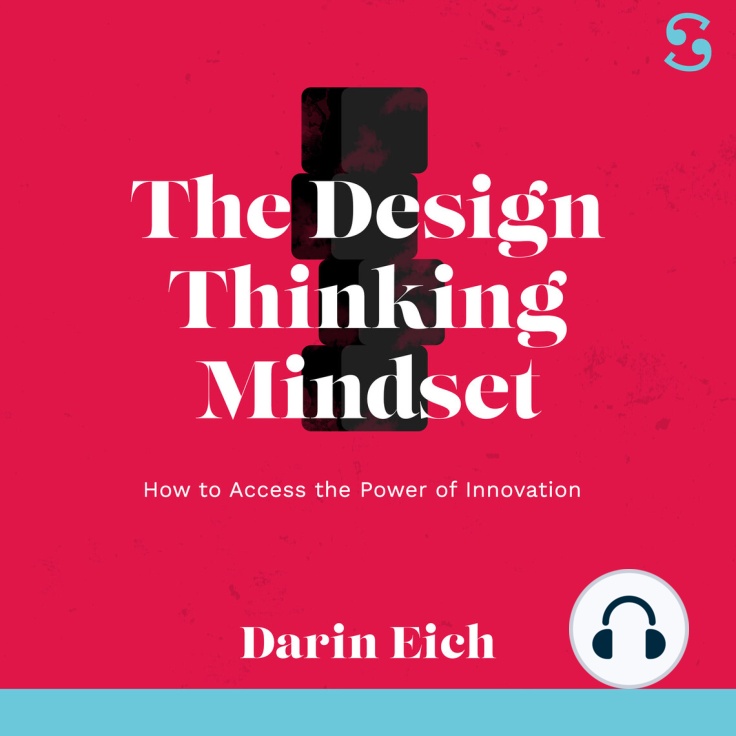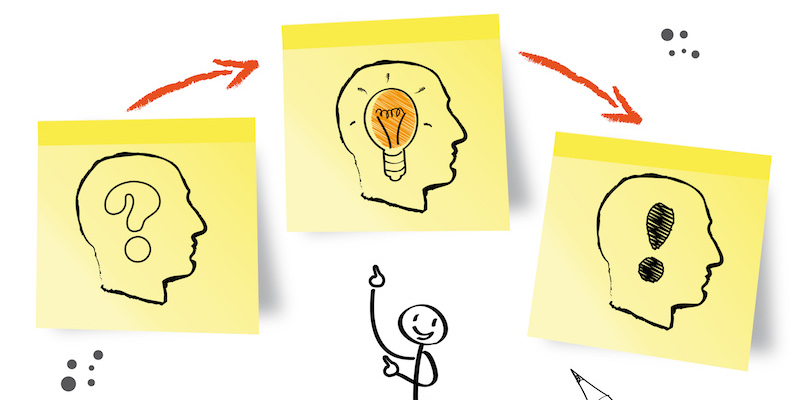Develop a mindset for innovative thinking through this introductory article.
Innovative thinking is the ability to generate new ideas, concepts, and solutions to problems. It is a mindset that embraces creativity, experimentation, and risk-taking. In this blog post, we will explore what innovative thinking is, what skills and mindsets are necessary to cultivate it, how this mindset works in innovation and design thinking, and how organizations can encourage innovation.
What is Innovative Thinking?
Innovative thinking involves approaching problems and opportunities with an open mind. It is a mindset that seeks out new and better ways of doing things, often through experimentation and trial and error. Innovative thinking can be applied to any industry or organization in a variety of contexts, from product design and development to business strategy and marketing.
Innovative thinking requires individuals to embrace uncertainty and ambiguity, take calculated risks, and persist in the face of setbacks. It also requires individuals to be comfortable with failure, as many innovative ideas do not succeed on the first (or second or third!) try.
Skills and Mindsets for Innovative Thinking
There are several skills and mindsets that are essential for innovative thinking. These include:
- Creativity: Innovative thinkers are creative and able to generate new ideas and solutions. They often approach problems from multiple angles and are not limited by preconceived notions.
- Curiosity: Innovative thinkers ask questions, seek out information, and are open to learning from others.
- Flexibility: Innovative thinkers are flexible and adaptable. They can pivot quickly in response to changing circumstances and are not afraid to abandon ideas that are not working.
- Risk-taking: Innovative thinkers are willing to take risks and try new things, even if it means failing first.
- Persistence: Innovative thinkers are persistent and resilient. They do not give up easily and are willing to work through setbacks and challenges.
- Collaboration: Innovative thinkers are collaborative and able to work effectively with others. They value diverse perspectives and are able to leverage the strengths of a team to generate new ideas and solutions.
The Innovative Thinking Process: Challenge, Ideas, Action
There are specific innovative thinking mindsets that come from the world of design thinking. These design thinking mindsets are attitudes to use as you innovate and you can apply them with a variety of frameworks or processes that you choose to use. The three sticky notes featured on the cover of the book, Innovation Step-by-Step: How to Generate & Develop Ideas for your Challenge, speak directly to the three basic innovative thinking stages of the process of innovation:

- Challenge
- Ideas
- Action
The first sticky note, with the stick figure question mark character, represents an initial challenge or problem someone needs ideas in order to tackle or solve. Following this question or challenge need, the second sticky note with the lightbulb character represents the generation of ideas and solutions. The third sticky note with the rocket character represents taking action, or moving through analyzing the ideas and ultimately selecting and launching one of best fit to address your initial problem or challenge.
Challenges Embracing Innovative Thinking in the Design Thinking Process
Oftentimes, people have an interest in innovating, but either don’t know where to start or get stuck along the way. They ultimately need to cultivate the courage to take action – even when they get stuck.
While the process of innovation may give someone an outline to follow to get started, there are three common places people, even experienced innovators, might become trapped because of a fixed or limited mindset – or just over-thinking.
To understand where people oftentimes find themselves treading water, we need to analyze the three stages of the innovation process, which are similar to the three core stages of the Design Thinking process taken from IDEO’s Human-Centered Design Process. (See this post with design thinking workshop resources for more on applying the frameworks.)
I. Hear (Challenges)
Throughout this process, we have seen many people getting stuck on the first step – the hearing, listening and learning stage. Considering all of the time we spend in our education system, it’s no wonder we get stuck here. We spend twelve plus years of our lives learning how to study – with this approach so ingrained into us, we oftentimes convince ourselves that we need to know more about a subject to be competent to tackle the problem at hand. We think we need to hear more, gain more knowledge, take another class or get another degree to do something we just need to take action with! But the real learning comes from doing.
II. Create (Ideas)
Sometimes individuals lack the belief or efficacy that they can innovate or think of new approaches or ideas – they are not open to realizing that they might already have the skills and knowledge to take on the next step. Or, that they don’t need great skill or knowledge to be creative and start to list ideas or solutions or collaborate with others to come up with a viable answer.
People can also get stuck in the actual creating stage itself. They may not create an idea much less the many ideas that are often required to be analyzed, synthesized, diverged and converged into an innovative concept. Or, they may start to make ideas, even discovering that creating and designing can be really fun components of the process, but don’t advance to the next step. These are the people you see working in a coffee shop, jotting down ideas in fine moleskin journals but never showing anyone else the ideas they are working on. They are not delivering real solutions or innovations that will benefit anyone because they stay in the mind, journal, or on their computer.
III. Deliver (Action)
An important lesson in life to learn is that it is oftentimes better to take action on something that isn’t that amazing than it is to wait until you’ve created something amazing – because it is impossible to know when that day will come. The rough stuff can be polished and made better with others ideas. Perfectionism kills innovation. Smart people especially tend to do a lot of thinking and can be prone to overanalyzing and overthinking.
In essence, an innovative mindset is about something finding a structure or solution that will help you to take action and move through the basic stages of innovation or design thinking. Move swiftly and with agility through Hearing (Challenges), Creating (Ideas), and Delivering (Action) to those you are designing or innovating for.
You can learn more about the Challenge-Ideas-Action framework in our Design Thinking Mindset audiobook.
Encouraging Innovative Thinking in Organizations
Organizations can play a critical role in fostering innovative thinking among their employees. Here are some strategies that can help innovative thinkers:
- Encourage experimentation: Organizations can create a culture of experimentation by encouraging employees to try new things and take risks. They can provide resources and support for employees to explore new ideas and pursue innovative projects.
- Embrace diversity: Organizations can promote diversity and inclusion to encourage innovative thinking. They can create diverse teams that bring together individuals with different backgrounds, perspectives, and skills.
- Provide training and development: Organizations can provide training and development opportunities to help employees develop the skills and mindsets needed for innovative thinking. This can include workshops on creativity, collaboration, and risk-taking.
- Celebrate success: Organizations can recognize and celebrate successes in innovation to encourage employees to continue to pursue new and groundbreaking ideas.
- Foster a culture of continuous improvement: Organizations can create a culture of continuous improvement by encouraging employees to learn from failures and mistakes. They can promote a growth mindset that values learning and development.
Improve your mindset for innovative thinking with InnovationTraining workshops
To cultivate innovative thinking, individuals need to develop skills and mindsets such as creativity, curiosity, flexibility, risk-taking, persistence, and collaboration. Think innovation! Organizations can play a critical role in fostering innovative thinking by embracing key attributes and behaviors.
To learn more about design thinking and innovation, contact us for a live innovation mindset program, innovation workshop, or online innovative mindset workshop. We can also design a custom design thinking training for your organization to be delivered remotely or on-site. An innovation keynote speaker may also help your group with innovative thinking.

